That would be Hadrian’s Wall.
Meaning…..SCOTLAND!
I took lots of pictures of green, and purple, and yellow growing things, but I’ve narrowed it down here to 10 pictures so that you wouldn’t be scrolling for-ev-er… and these should all be making appearances in the book, as they contribute to the island ambiance and the Scotland ‘aesthetic,’ if there be such a thing…
This is gorse. It’s bright YELLOW, it’s verra prickly, and it’s EVERYWHERE. Here on this street on Mull, it had taken over a rock face by the road.
I just finished a book by David Kerr Cameron where he lists the names of his grandfather’s era croft steadings, and one was called Whinfield. Whin was another name for gorse, and he was demonstrating the people’s straightforward, no-white-wash approach to the barrenness of their land. Interesting attitude, and quite un-American…
This is lichen. GREEN. Furry. So soft! I loved the lacey look of this type of lichen, and found it on fenceposts, rocks, walkways–obviously not fussy.
Back to YELLOW again. On my delightful and oh-so-informative nature walk with Mull Magic, I learned about Ancient Woodland Indicators (fascinating and informative article there!). This is a group of plants that indicate that there was an ancient woodland on this spot. How cool! A miniature flag to point out environmental history! I liked learning about this secret code known only by plant-lovers.
This delicate little flower is called Lesser Celandine.
Now onto PURPLE! This is another Mull Magic find that I thought was just beautiful. This sculptural purple seaweed is known as egg wrack, for the little egg-shaped bladders of air it has. It was washed up by a hidden (disused) whiskey still cave!
How is seaweed connected to Remnants? It’s only what directly precipitates the MacDonalds’ decision to start down their irrevocable path… (are you hooked yet? 😉
Back to GREEN again! That’s my big foot, giving an idea of how the sedge grows.
This ring was called a ‘fairy ring’ by Stuart, but I think he was teasing. Wikipedia says that a fairy ring is actually a ring of mushrooms, or a ring of grass growing differently (scientifically explained by an underground fungus, but what fun is that?). The early Western European observers of this phenomenon were wary of such spots, holding them as sacred places for the fairy spirits, and woe to those who dared disturb them!
“Thrift, Horatio. The funeral-baked meats did coldly furnish forth the marriage tables.”
Anyone??
This is a plant called thrift, or sea pinks. It was one of the only blooming things on Mull when I went in early May. I love the name, and that it was used for natural remedies and household necessities by the island population. The folklore of Cornwall, where the plant is also profuse, suggests ‘you will never be poor if thrift grows in your garden.’
This was a delightful plant that was one of my first acquaintances in Castlebay, Barra. I went on a walk to the edge of the world (a little hill where the road disappeared from the horizon). Then I saw another hill. When I reached that, I saw the sea, washing up on white sands. The shadows on the slumbering hills and the shifting sands covered with sheep tracks… it’s hard to describe how beautiful this place was.
But on the walk there, I saw lots of these silver-sided, velcro-like leaves. Later, I found they’re called silverweed. It reminds me of ‘numbweed,’ a plant from the fictional universe of Pern, created by Anne McCaffrey.
Might silverweed, with its common name and ubiquitous presence, also have its uses?
So, here’s one I have no idea what it is… but it is RED! And GREEN! And TWISTY!
There were lots of plants, especially trees, that were twisty like this because of all the wind coming off the large bodies of surrounding water. This particular plant lived inside McCaig’s Tower overlooking Oban.
It’s no wonder that these elaborately twisting trees gave rise to legends of witches’ dens, but after spending one afternoon in Oban in a fell rainstorm, I can see why trees on the western Scottish coast would be all curlicue’d like this poor fella!
Okay, you knew there had to be MOSS in the Scotland Edition, right?
These are prime examples of YELLOW and RED sphagnum moss. Aren’t they glorious? These were both found on Heaval, the large, steep, rocky hill behind Castlebay, Barra.
The hill which should take forty minutes to summit, according to locals.
I caution you, travelers: you first have to get to the starting point (20 minutes from town), and then you have to find the path up (which faces east, not south).
And then don’t slip on the path, which is also where the mountain stream wends its way down the hill to the valley below…
I went up the steeper southern face, and was just about to give up on finding the famed statue of Mary when I looked east and saw it. Below me.
It was a perfect case of wandering according to whim, and eventually getting where you wanted (or needed) to go.
Green, red, purple, yellow… what colors have you seen growing around you lately?
Images property of Margaret Pinard

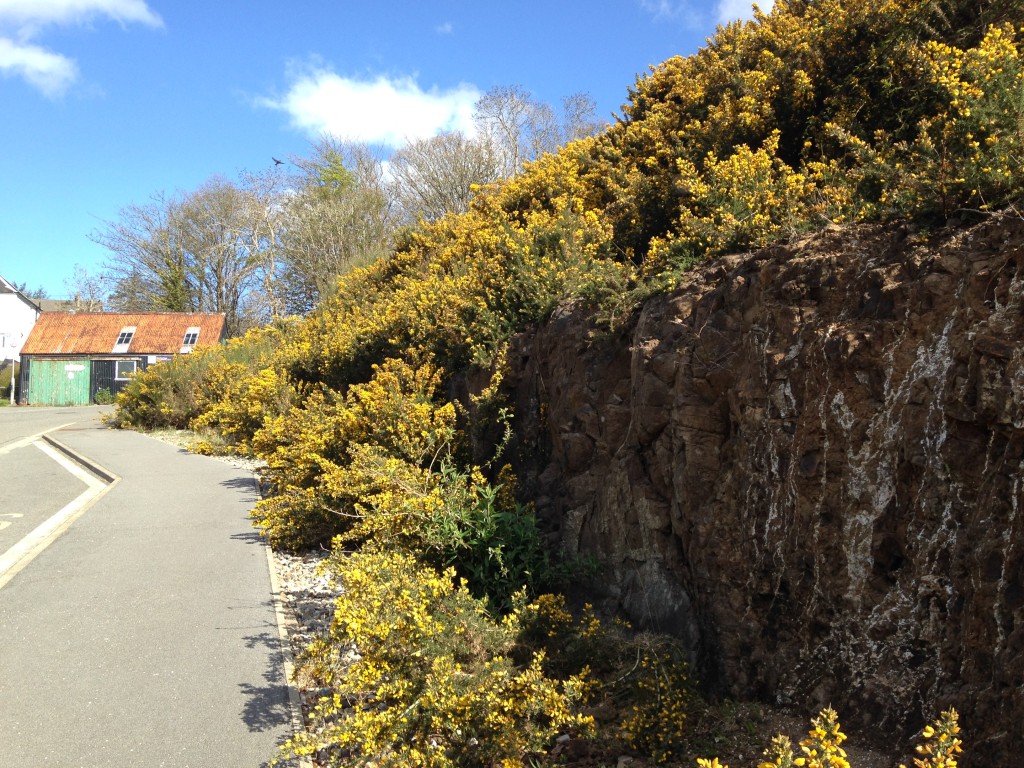
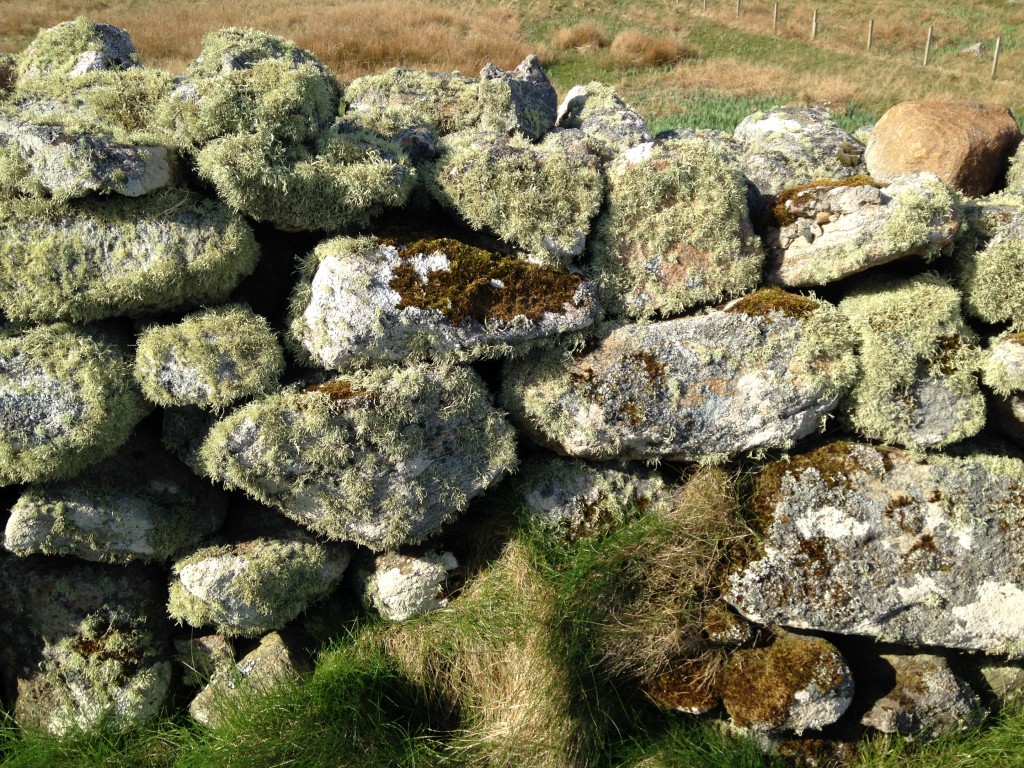
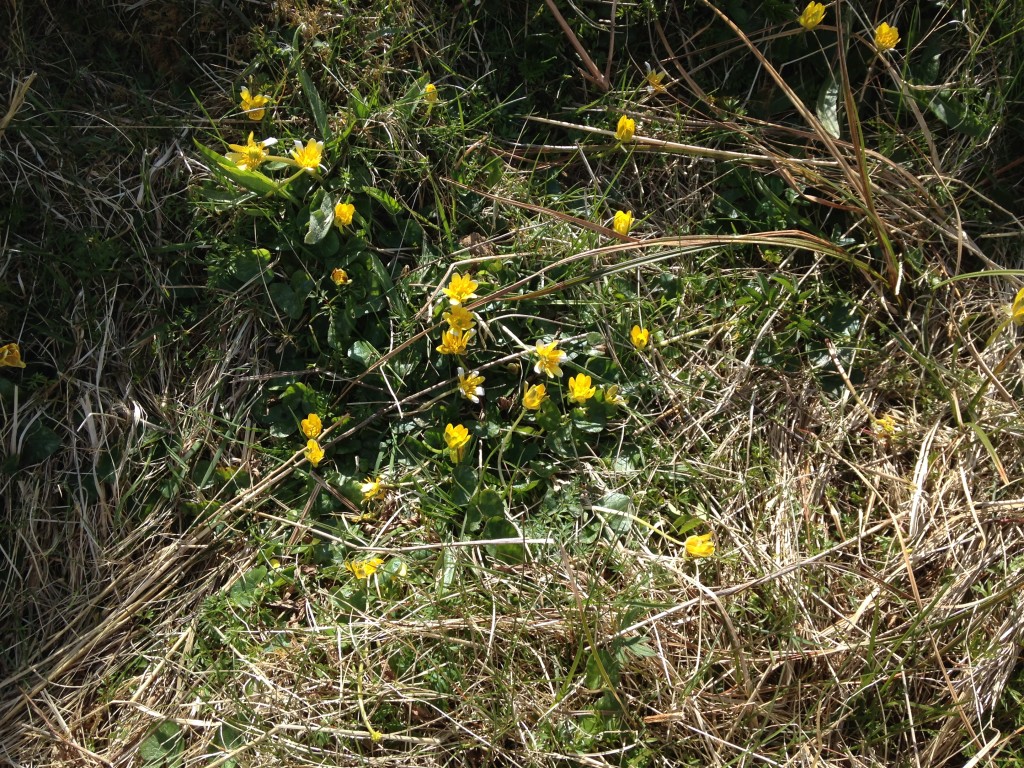
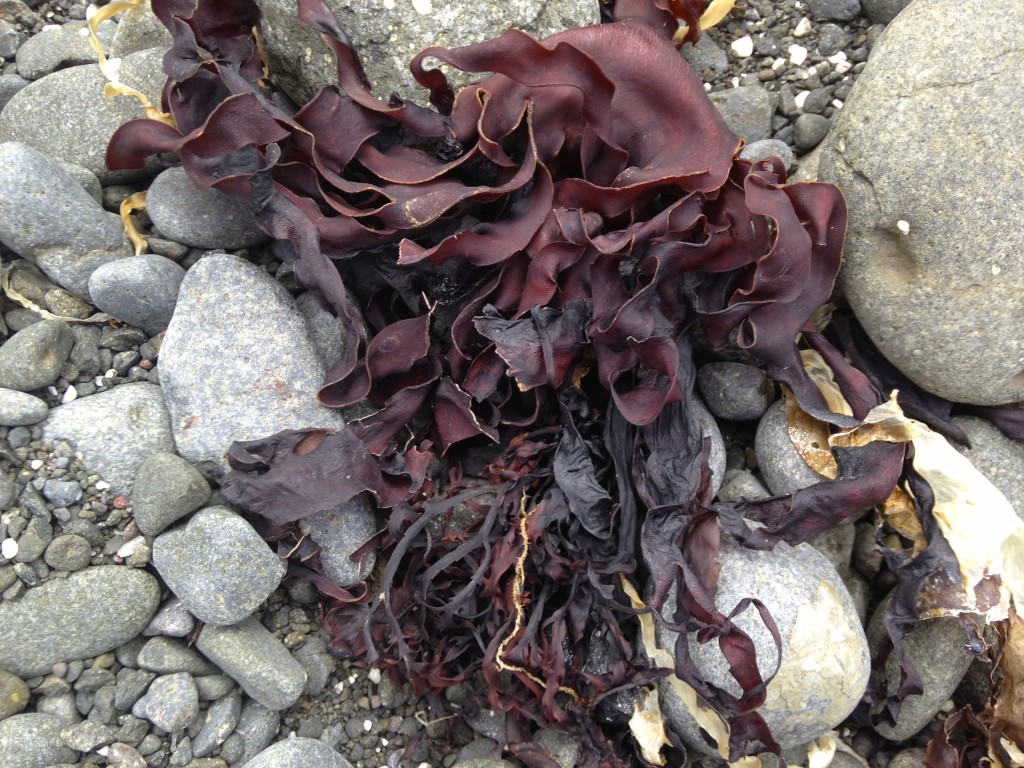
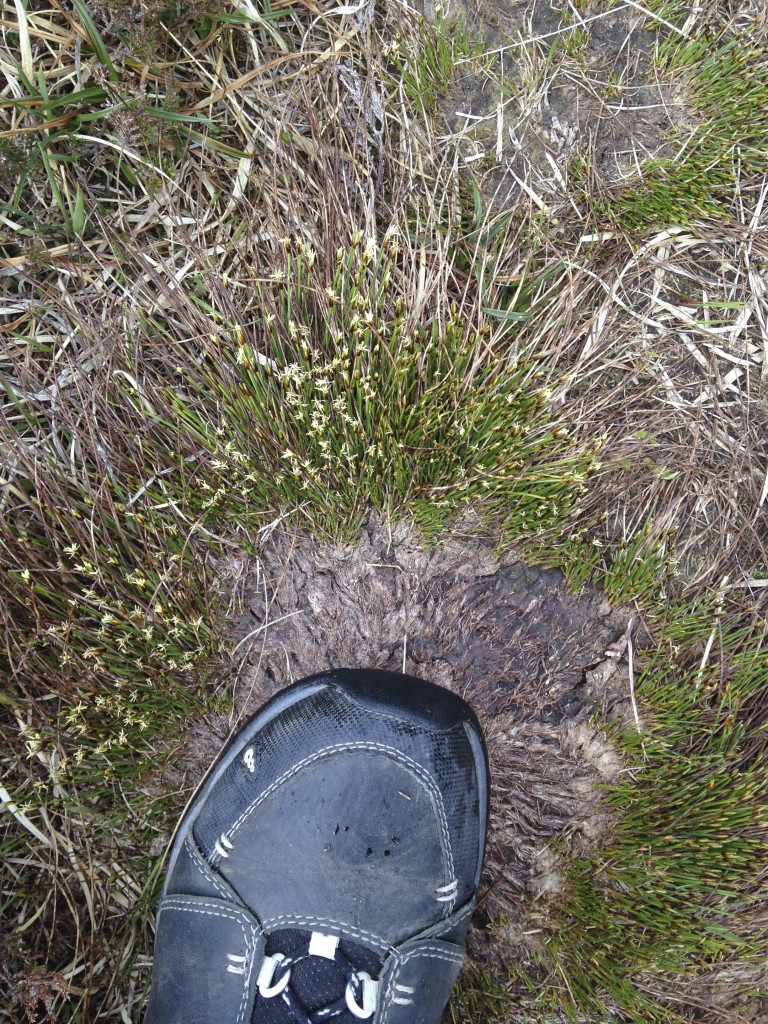
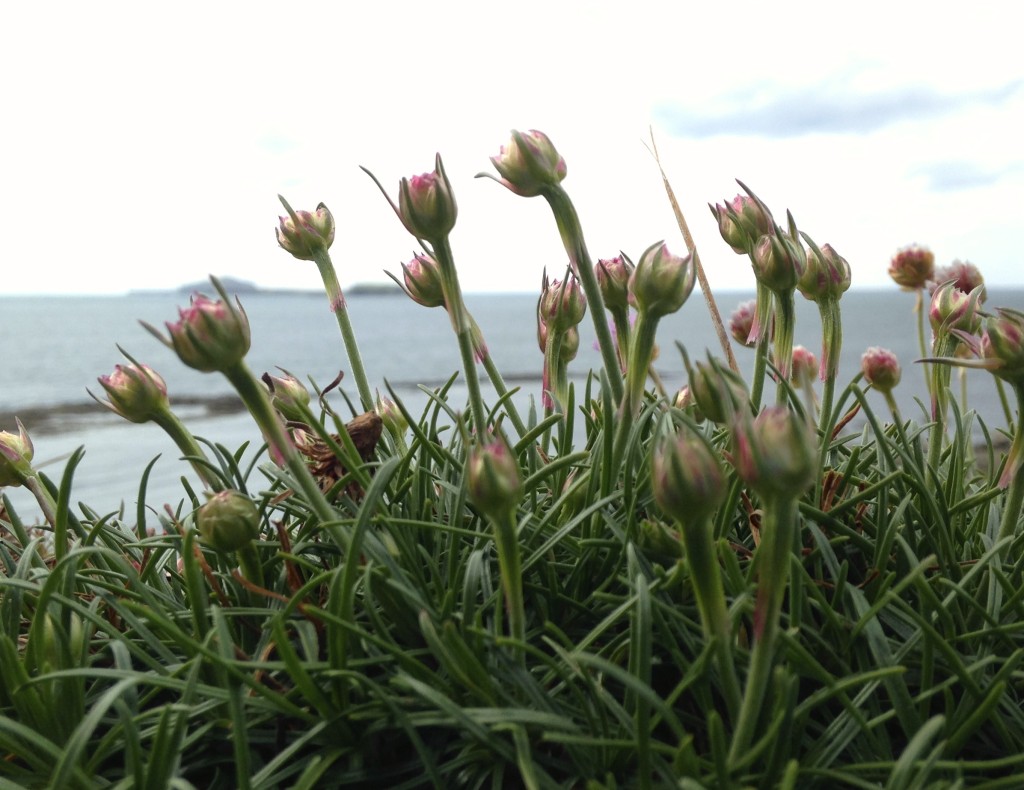
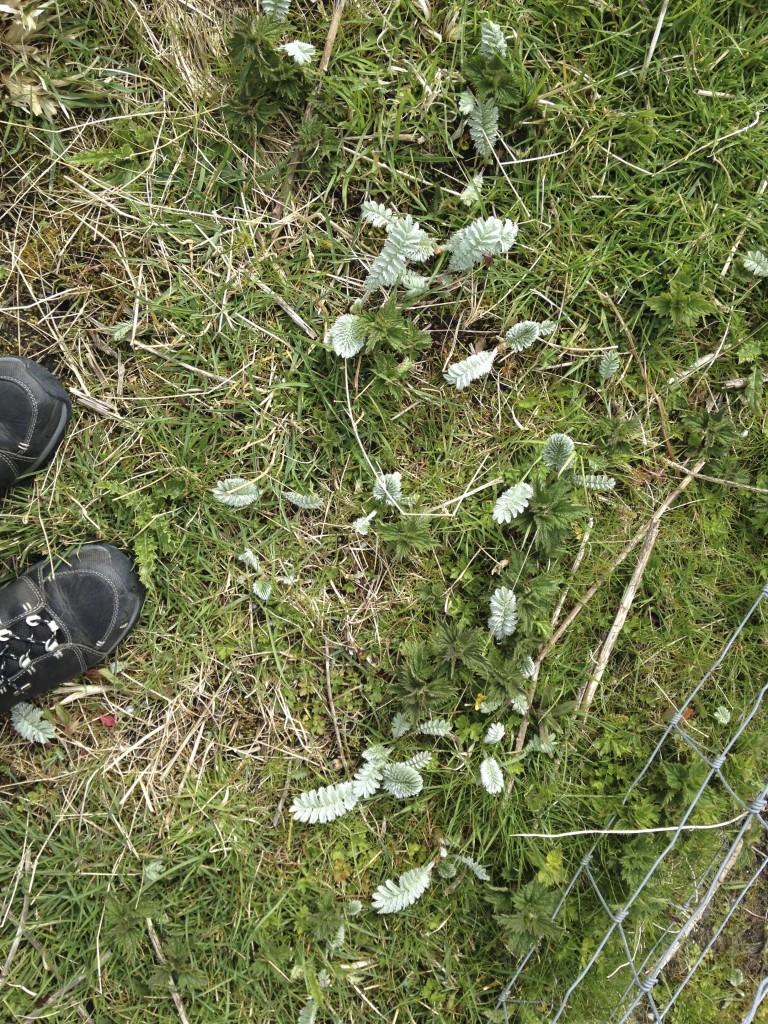
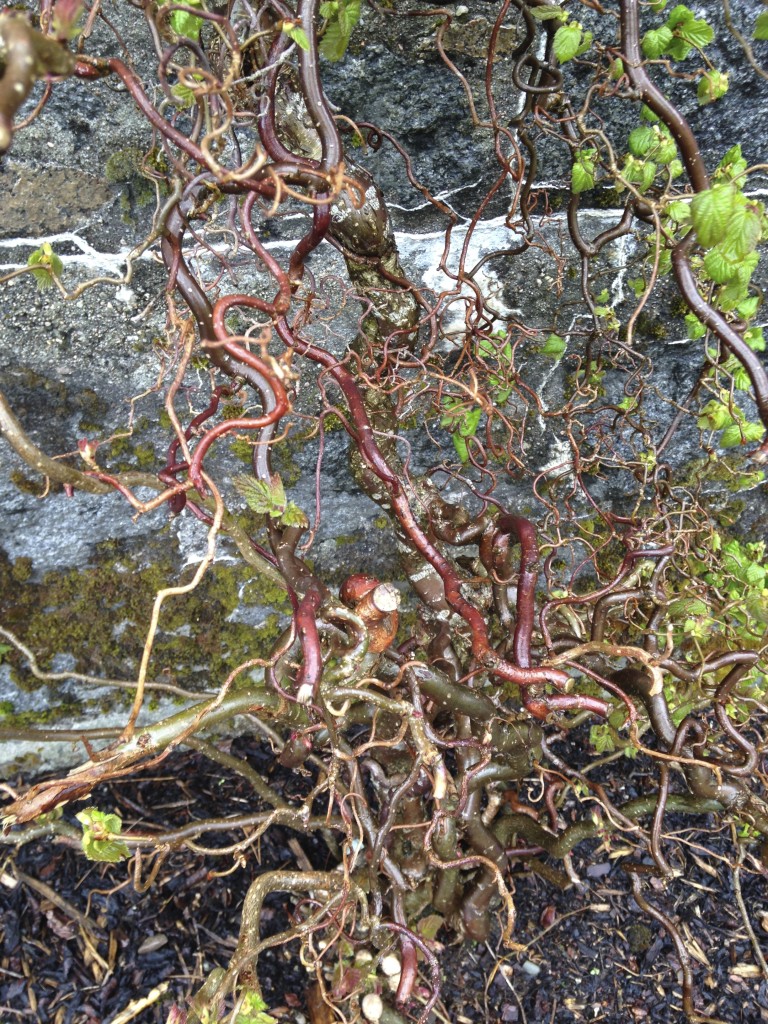
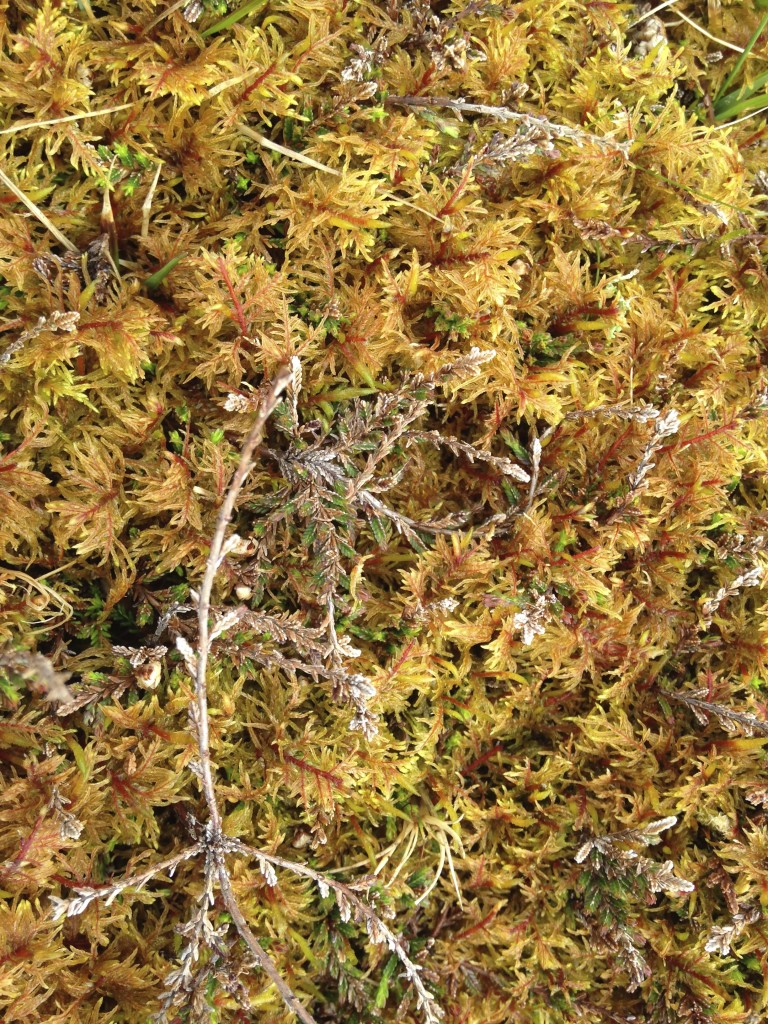
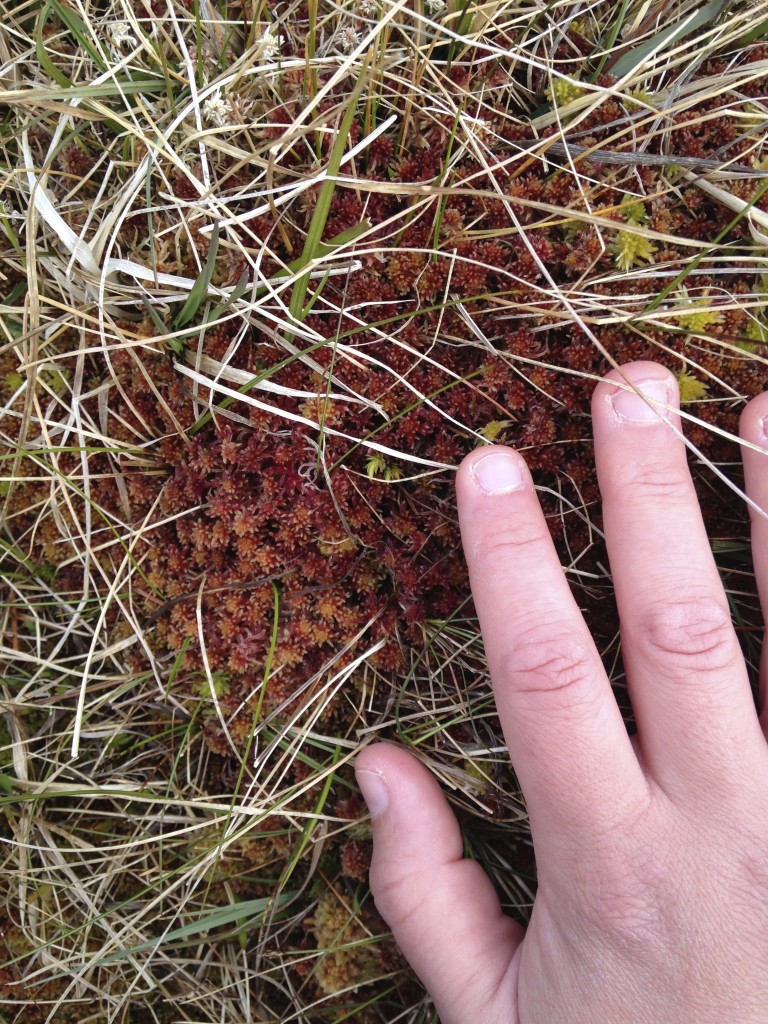

GREEN, but I had to visit Ireland to see this color. I usually see so much BROWN in California!
YES! Ireland is … Shamrock Green! Thanks for contributing, Cathy! 🙂